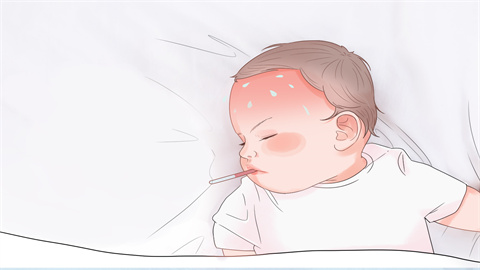What should I do if a child has a fever and drools excessively?
Generally, drooling accompanied by fever in children may be caused by factors such as oral development stages, teething, oral ulcers, hand-foot-and-mouth disease, or herpangina. Treatment options include general care and medications, as directed by a physician. Detailed explanations are as follows:

1. Oral Development Stage
During oral development, salivary glands gradually mature and produce more saliva, while the swallowing function is not yet fully developed, which may lead to drooling. Fever may occur due to an immature temperature regulation center or infections, although it is not directly related to drooling. It is important to maintain good oral hygiene for the child and use bibs to promptly absorb excess saliva, avoiding skin irritation.
2. Teething Period
During teething, gum irritation increases saliva production, and limited swallowing ability in children can lead to drooling. Fever may arise from discomfort during teething or accompanying infections. Providing teething toys or foods may help relieve gum discomfort. Maintaining oral hygiene is also essential to prevent infection.
3. Oral Ulcers
Oral ulcers may be caused by viral, bacterial, or fungal infections, or by vitamin deficiencies or trauma that damages the oral mucosa. The ulcerated area may stimulate increased saliva production, and pain may cause difficulty swallowing, leading to drooling. Fever may accompany the infection or inflammation. Symptoms such as refusal to eat and irritability may also occur. Treatment may include medications such as ribavirin granules, cefixime granules, and vitamin B2 tablets, under the guidance of a physician.
4. Hand-Foot-and-Mouth Disease
Hand-foot-and-mouth disease is caused by enteroviruses and primarily spreads through the digestive tract, respiratory tract, or close contact. When the virus affects the mouth, hands, and feet, it can cause oral mucosal blisters or ulcers, increasing saliva production and causing drooling due to painful swallowing. Viral infection may also cause fever and rashes. Treatment options may include oseltamivir granules, isatis root granules, and pidotimod oral solution, as directed by a physician.
5. Herpangina
Herpangina is usually caused by Coxsackievirus and spreads mainly through the respiratory or digestive tract. It may cause blisters or ulcers in the throat area, increasing saliva production, leading to drooling, and often accompanied by fever. Symptoms such as sore throat and pharyngeal congestion may also appear. Treatment may involve medications such as compound honeysuckle granules, compound chlorhexidine mouthwash, and cefdinir dispersible tablets, as recommended by a physician.
In daily life, maintaining regular oral hygiene, using a soft-bristled toothbrush and children's toothpaste, ensuring adequate rest, and providing a balanced diet are important for preventing infections and promoting the child's recovery.




